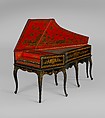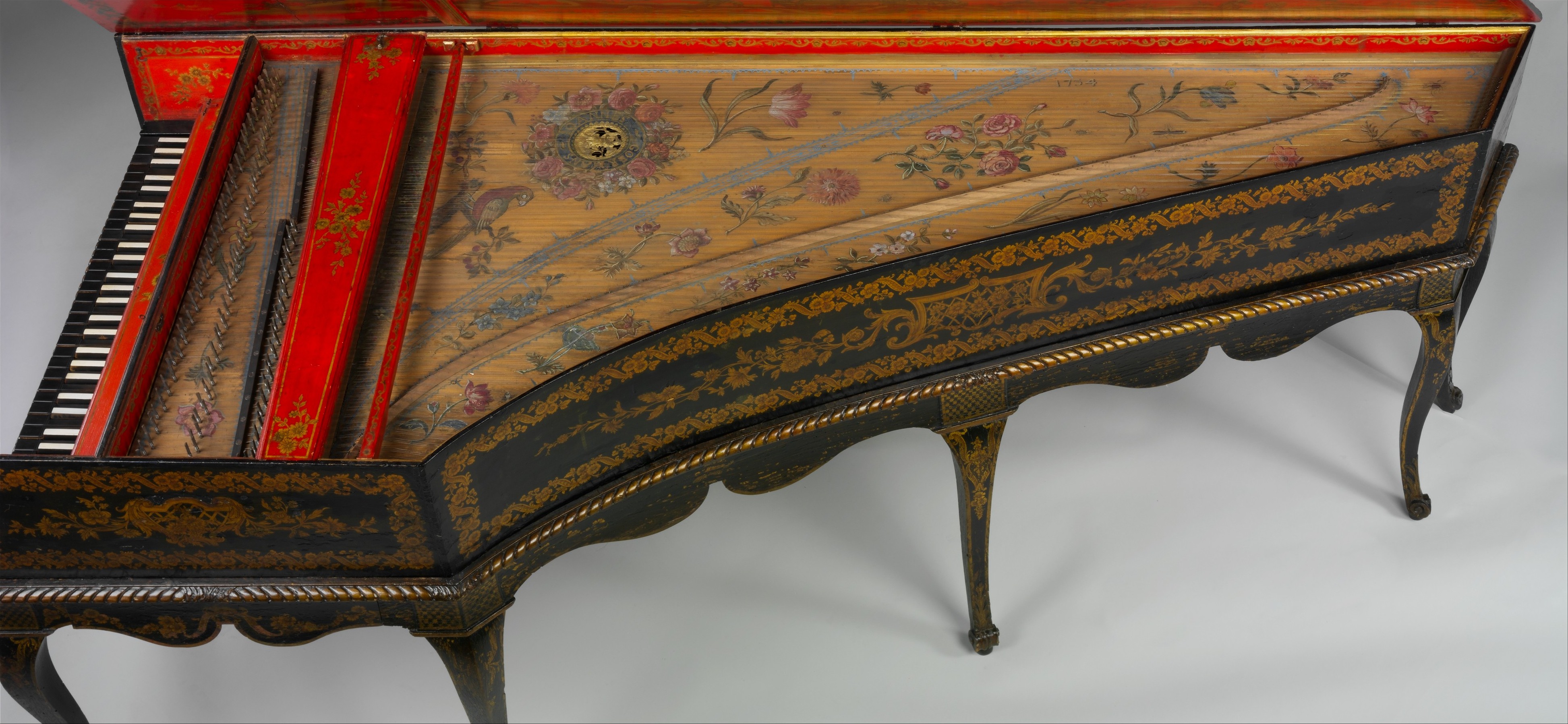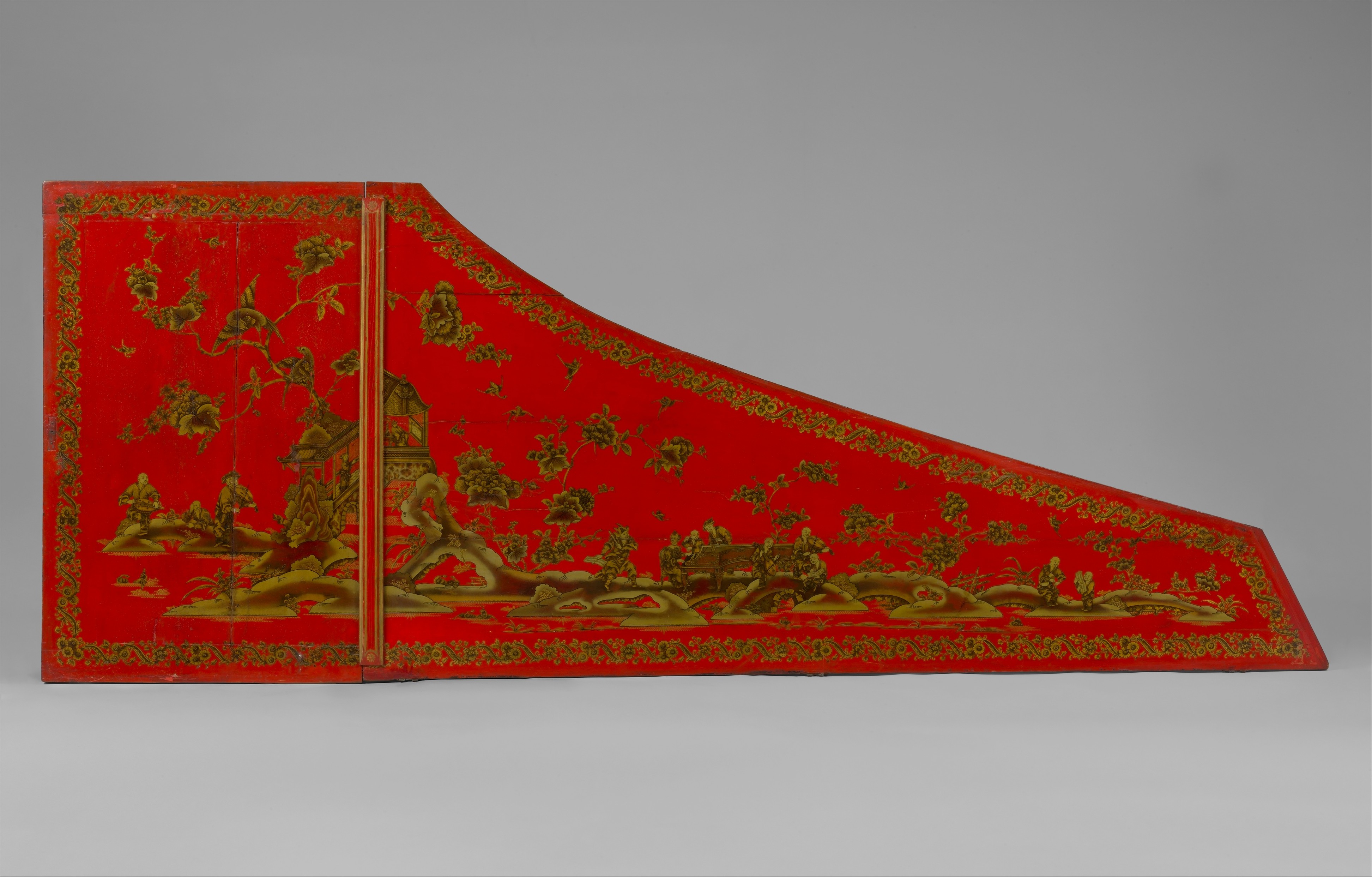Harpsichord converted to a piano
Jean Goermans Dutch
The harpsichord reached its greatest popularity and refinement in eighteenth century France. The French Revolution of 1789 and subsequent turmoil caused many of these beautiful instruments to be destroyed. This example is a rare survivor that was later converted to a piano in the late eighteen or nineteenth century.
The harpsichord case painted black and decorated in gilt with musical trophies, flowers, floral borders, and small pamels of lattice diaper. Separate stand with seven cabriole legs and scroll feet with carved acanthaus ornaments. The inside of the case is painted red with chinoiserie decorations in black and gold. The inside lid decorations include an Asian style pavilion and multiple Asian musicians playing European instruments including the violin, viola da gamba, hurdy gurdy, and harpsichord. The lid also features exotic birds and large flowers. The sound board is decorated with polychrome flowers and a large parrot. Around the rose is a large floral arrangement and the makers name: IOANNES GOERMANS. The soundhole rose is gilded pewter with an angel and lyre and the initials IG.
The instrument originally had two-manuals and three sets of strings (two eight foot registers and a four foot register). In the conversion, the top keyboard was removed and the four foot bridge and strings were also removed (and the hitchpin holes plugged). The lower keyboard has 61 keys (FF-f3) with ebony naturals and bone slips over painted accidental blocks. The removal of the upper keyboard and the jacks provided room for a simple piano mechanism based on the German prellmechanik.
Due to rights restrictions, this image cannot be enlarged, viewed at full screen, or downloaded.
This artwork is meant to be viewed from right to left. Scroll left to view more.






